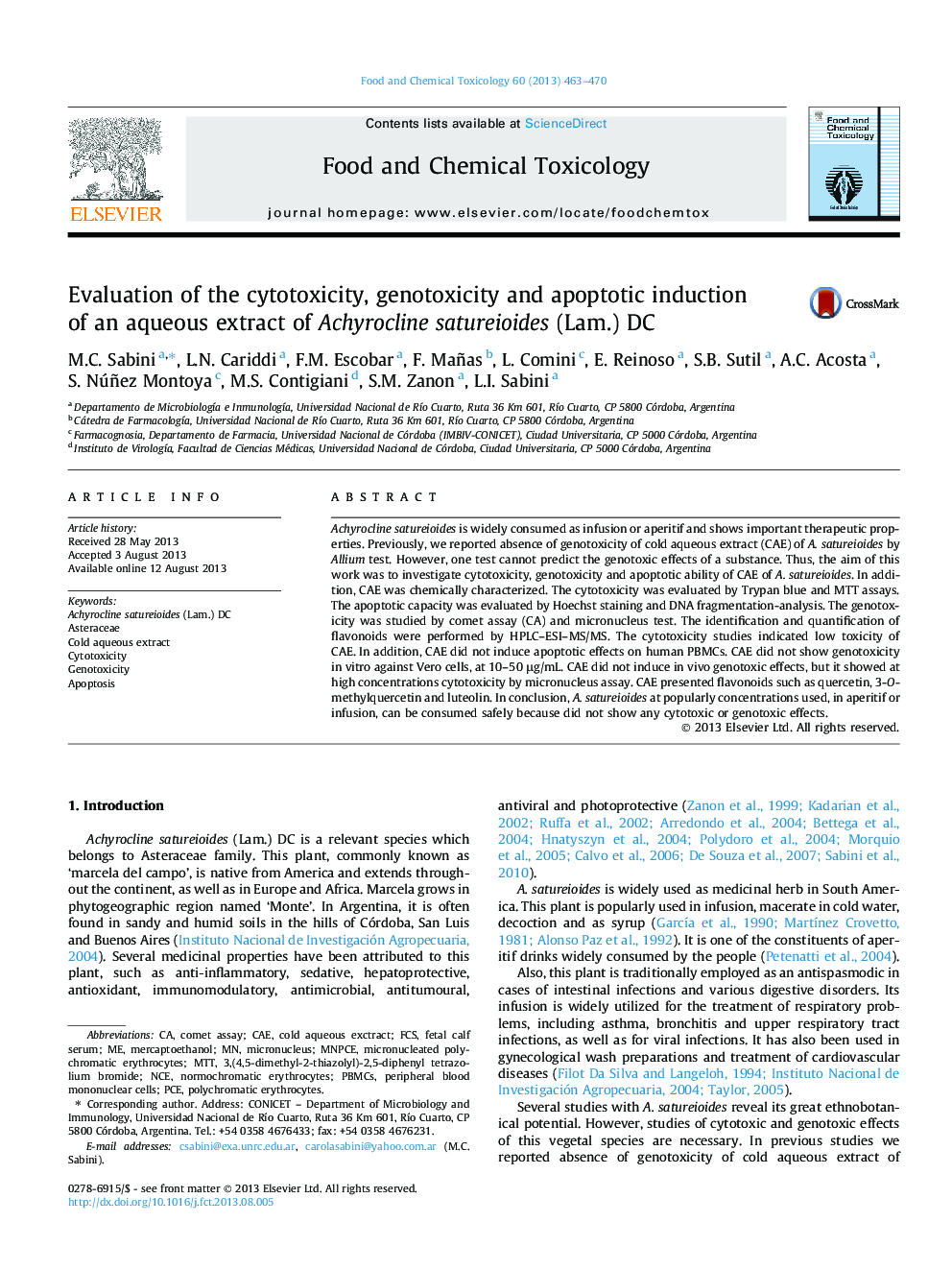| Article ID | Journal | Published Year | Pages | File Type |
|---|---|---|---|---|
| 2585133 | Food and Chemical Toxicology | 2013 | 8 Pages |
•Cold aqueous extract (CAE) of A. satureioides showed low toxicity in vitro on Vero cells and human PBMCs.•CAE does not induce apoptosis on human PBMCs.•CAE at high concentrations showed genotoxic capacity in vitro on Vero cells by comet assay.•CAE did not induce in vivo genotoxicity, but it shows at high concentrations toxic effects by micronucleus assay.•CAE of A. satureioides shows the presence of quercetin, 3-O-methylquercetin and luteolin.
Achyrocline satureioides is widely consumed as infusion or aperitif and shows important therapeutic properties. Previously, we reported absence of genotoxicity of cold aqueous extract (CAE) of A. satureioides by Allium test. However, one test cannot predict the genotoxic effects of a substance. Thus, the aim of this work was to investigate cytotoxicity, genotoxicity and apoptotic ability of CAE of A. satureioides. In addition, CAE was chemically characterized. The cytotoxicity was evaluated by Trypan blue and MTT assays. The apoptotic capacity was evaluated by Hoechst staining and DNA fragmentation-analysis. The genotoxicity was studied by comet assay (CA) and micronucleus test. The identification and quantification of flavonoids were performed by HPLC–ESI–MS/MS. The cytotoxicity studies indicated low toxicity of CAE. In addition, CAE did not induce apoptotic effects on human PBMCs. CAE did not show genotoxicity in vitro against Vero cells, at 10–50 μg/mL. CAE did not induce in vivo genotoxic effects, but it showed at high concentrations cytotoxicity by micronucleus assay. CAE presented flavonoids such as quercetin, 3-O-methylquercetin and luteolin. In conclusion, A. satureioides at popularly concentrations used, in aperitif or infusion, can be consumed safely because did not show any cytotoxic or genotoxic effects.
